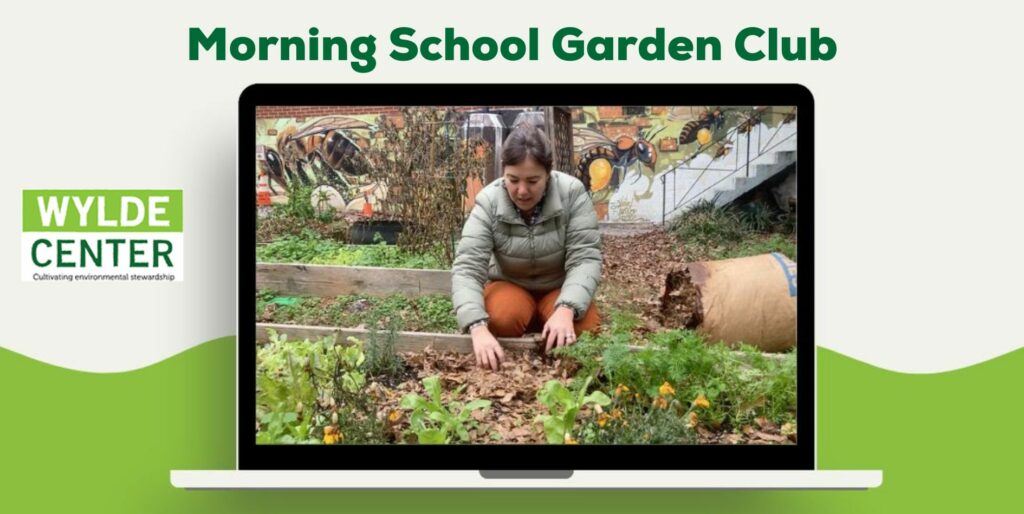By Lily McNulty, Wylde Center Education Intern & Graduate Research Assistant at Rollins School of Public Health
February’s webinar focused on starting seeds in the classroom. Dory Cooper, Wylde Center’s School Programs Manager, walked through all the essentials when it comes to starting seeds at school.
Why start seeds indoors?
- Introduce basic garden concepts to students earlier in the year
- Seed exploration
- Understand plant needs
- Observe plant life cycles
- Save money on transplants (sometimes)
- Often, getting everything you need to start seeds may not be as cost-effective in the beginning, but the more you do it, the more it’s worth it!
Lesson plan idea: Observation & Hypothesis
| Plant 1: No soil
|
Plant 2: No sun
|
| Plant 3: No water | Plant 4: No air
|
Observation and hypothesis are good ways to experiment with treatments – students can predict what will happen, or what the plant will look like. This is a good lesson for what happens when plants don’t have their basic needs.
Lesson plan idea: Journal
| Day 1: | Day 5: |
| Day 10: | Day 15: |
Tracking the progress of a plant can be tied to other lessons in the classroom.
When should I start seeds?
- Utilize a planting calendar like that of Georgia Organics: There are plenty out there. Typically, Atlanta falls into Zone 7B. “Seeding in the greenhouse” is the activity that you can look for in the 12-month calendar for when you can begin starting your seeds.
- Seed packets often come with starting instructions on the back of the packet. This information includes whether it’s recommended to start these seeds indoors or not – for example, squash is usually not recommended to be started indoors.
What do I need to start seeds?
There are various ways to set up your own seed-starting system. This can be done with purchased materials, or materials you may have at home or in the classroom.
Grow light system
- While a grow light system is ideal, they may be expensive. This is a great option if you are applying for a grant, or if there is an unused one at your school.
Other options
- A lower cost option is starting seeds in an egg carton and placed on a windowsill. Cardboard egg cartons are a good way to introduce concepts of sustainability, reducing waste, and recycling. It is helpful to grow a few seeds in each compartment to increase the likelihood of growth, and then trimming back the ones that grow more than one.
- Hydroponics is a way to start seeds in water before transferring them to soil. Hydroponics sets can be purchased online.
Potting soil
- Standard potting soil should be adequate for use in your standard seed starting systems, but there are specific types available that contain certain minerals.
Caring for seedlings
- Water consistently, and in smaller amounts. Seedlings have smaller amounts of soil, so they generally need more water. However, it’s important not to over-water the seedlings as they can become waterlogged. Usually, a splash of water once a day or every other day is fine.
- Spray bottles are a good way to moderate watering
- Hot classrooms may lead to seedlings drying out
- If you do have grow lights, it’s important to raise them as there is growth – it should be always about 2 inches above the plants.
- “Potting up” is the process of transferring your seedlings from small cells into bigger containers, allowing them to grow stronger roots. This should happen when you see “true leaves” – these are the leaves that grow after the starting leaves. When you see about 4 “true leaves” you can transfer them to bigger containers.
- Plastic cups are a great material to use as a replacement for pots.
How to Plant
- “Harden off”
- Suddenly moving plants from a stable environment to one with wide variations in temperature, light, and wind can often kill plants
- Moving seedlings outdoors at least one week before planting them in the garden can prevent this from happening. It essentially reduces shock to the seedlings.
- After about a week outdoors, the seedlings can be transferred to the garden. Remove them from the containers, gently break up the root system with your fingers, and plant them in your garden.

